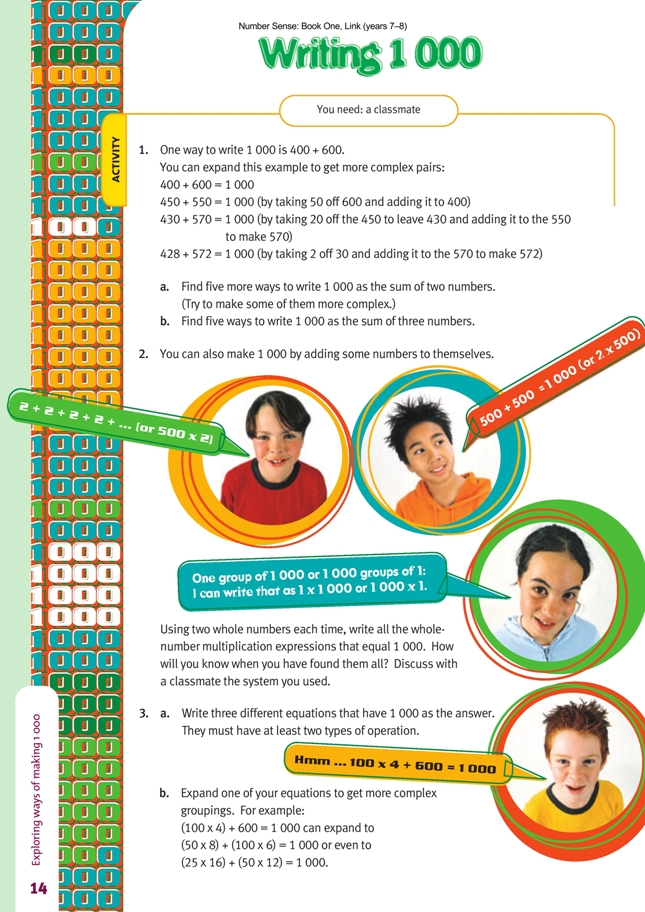This is a level 3 number activity from the Figure It Out series. It relates to Stage 6 of the Number Framework.
A PDF of the student activity is included.
Click on the image to enlarge it. Click again to close. Download PDF (569 KB)
explore ways of making 1 000
A classmate
This activity will develop fluency with combinations of numbers that make 1 000. This is a useful way to help the students understand the bridge between 3-digit and 4-digit numbers.
Question 2 encourages the students to use a compensation strategy to make a series of addition equations that are equivalent to 1 000. In your discussion with them, ensure that each student can clearly see the connection between their equations.
Question 3 links addition of equal groups to an equation using multiplication to encourage more efficient ways of thinking about 1 000. This is then extended in question 4 into equations involving combinations of operations.
In question 4b, the students should discuss and share the ways they used compensation to help them derive new equations as they expanded their original equation.
Challenge the students to come up with expressions that have a pattern in them, such as:
40 x 20 + 20 x 10
8 x 50 + 4 x 100 + 1 x 200
60 x 30 – 40 x 20
50 x 25 – 20 x 10 – 10 x 5
Answers to Activity
1. a. Results will vary. For example: 510 + 490,
156 + 844, and so on.
b. Results will vary. For example: 100 + 300 + 600,
236 + 552 + 212, and so on.
2. 1 000 x 1 or 1 x 1 000
500 x 2 or 2 x 500
250 x 4 or 4 x 250
200 x 5 or 5 x 200
125 x 8 or 8 x 125
100 x 10 or 10 x 100
50 x 20 or 20 x 50
25 x 40 or 40 x 25
Discussion will vary. You will know if you have found all the possibilities when you have used all the factors of 1 000. (For example, 3, 6, 7, and 9 do not divide evenly into 1 000.
3. a. Answers will vary.
For example: 700 + 500 – 200 = 1 000
2 100 – 1 500 + 400 = 1 000
1 600 ÷ 2 + 200 = 1 000
1 200 ÷ 2 + 400 = 1 000.
b. Answers will vary. For example,
700 + 500 – 200 = 1 000 could be expanded
to (70 x 10) + (50 x 10) – (20 x 10) = 1 000
(140 x 5) + (100 x 5) – (40 x 5) = 1 000.
